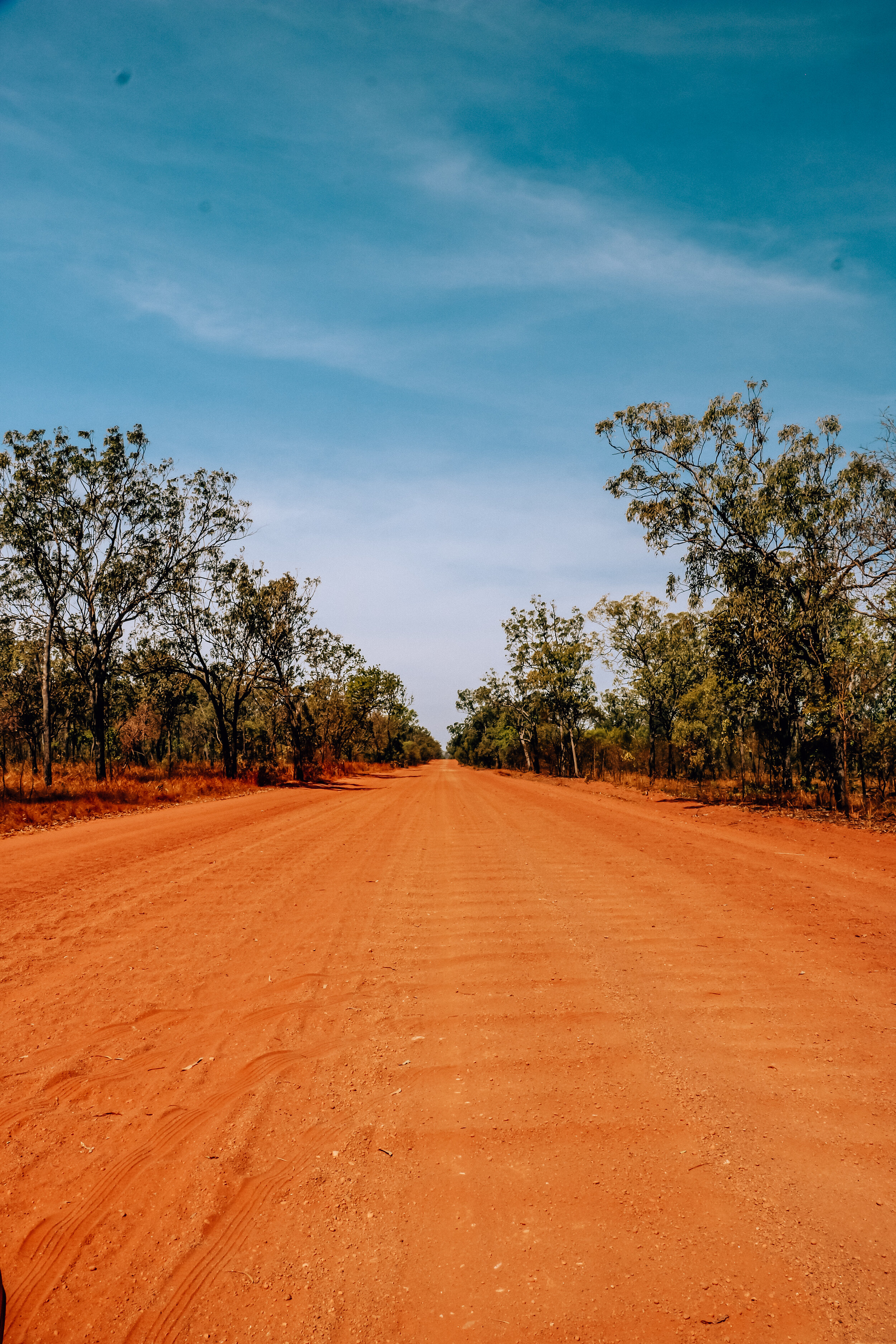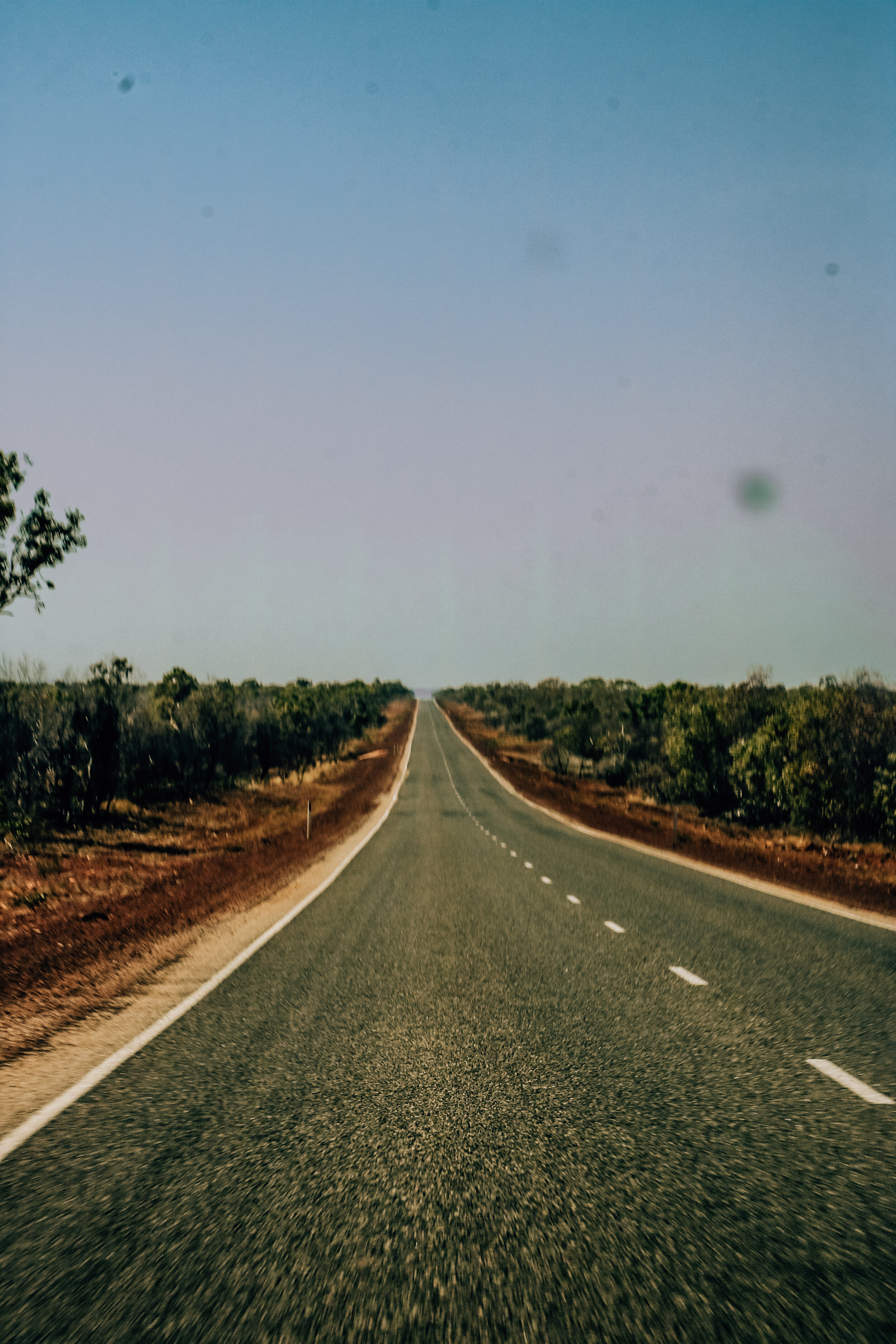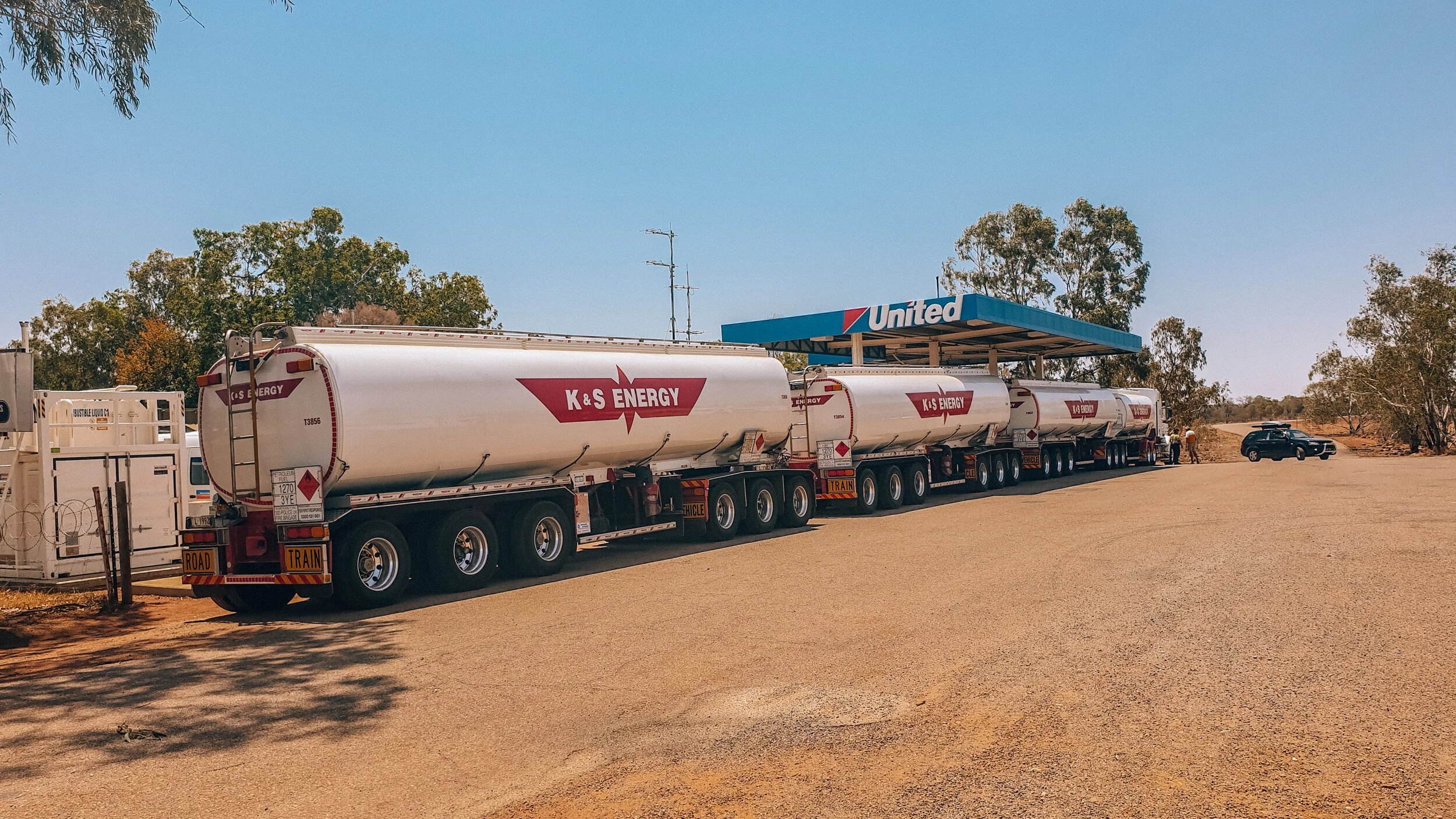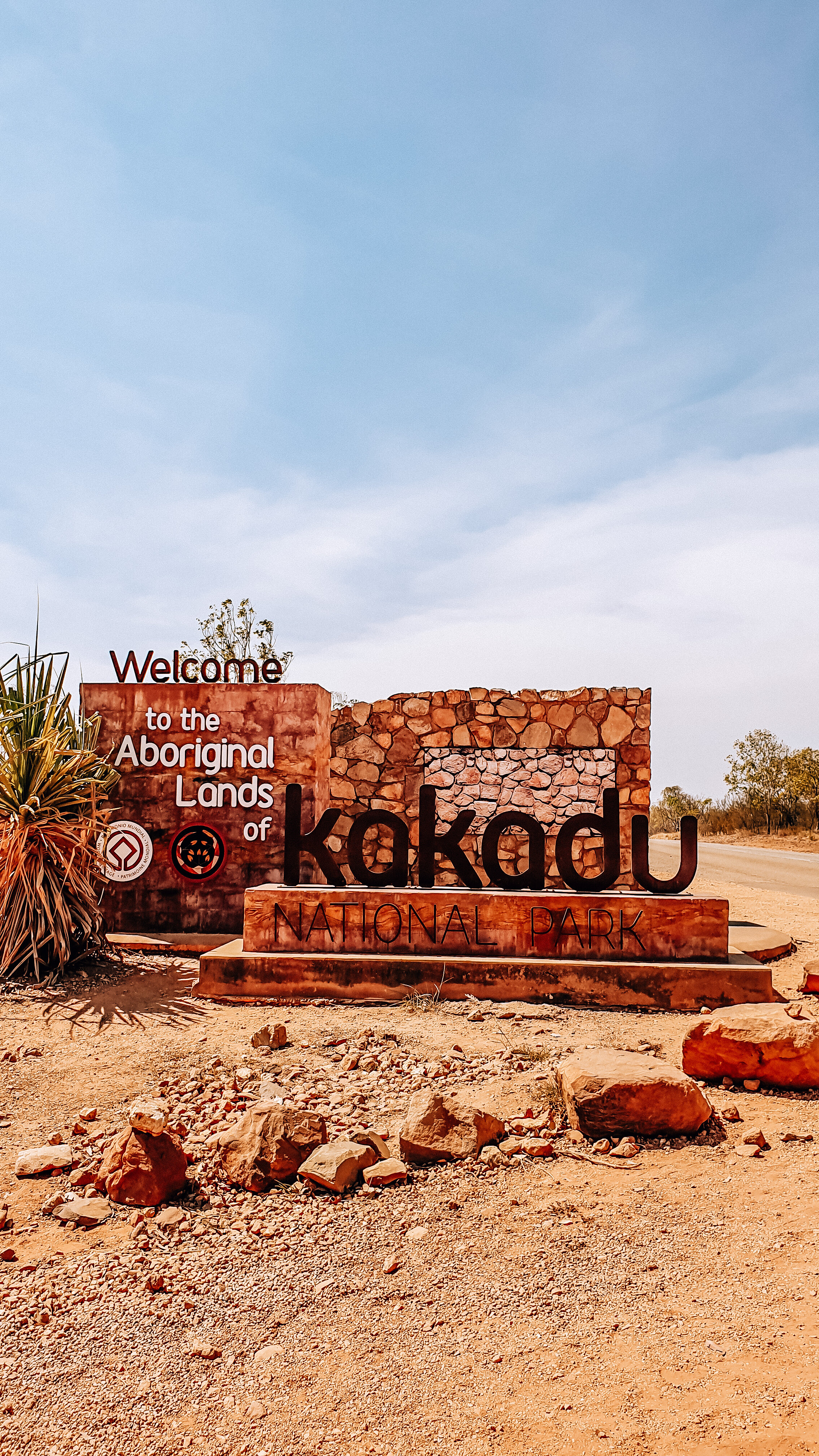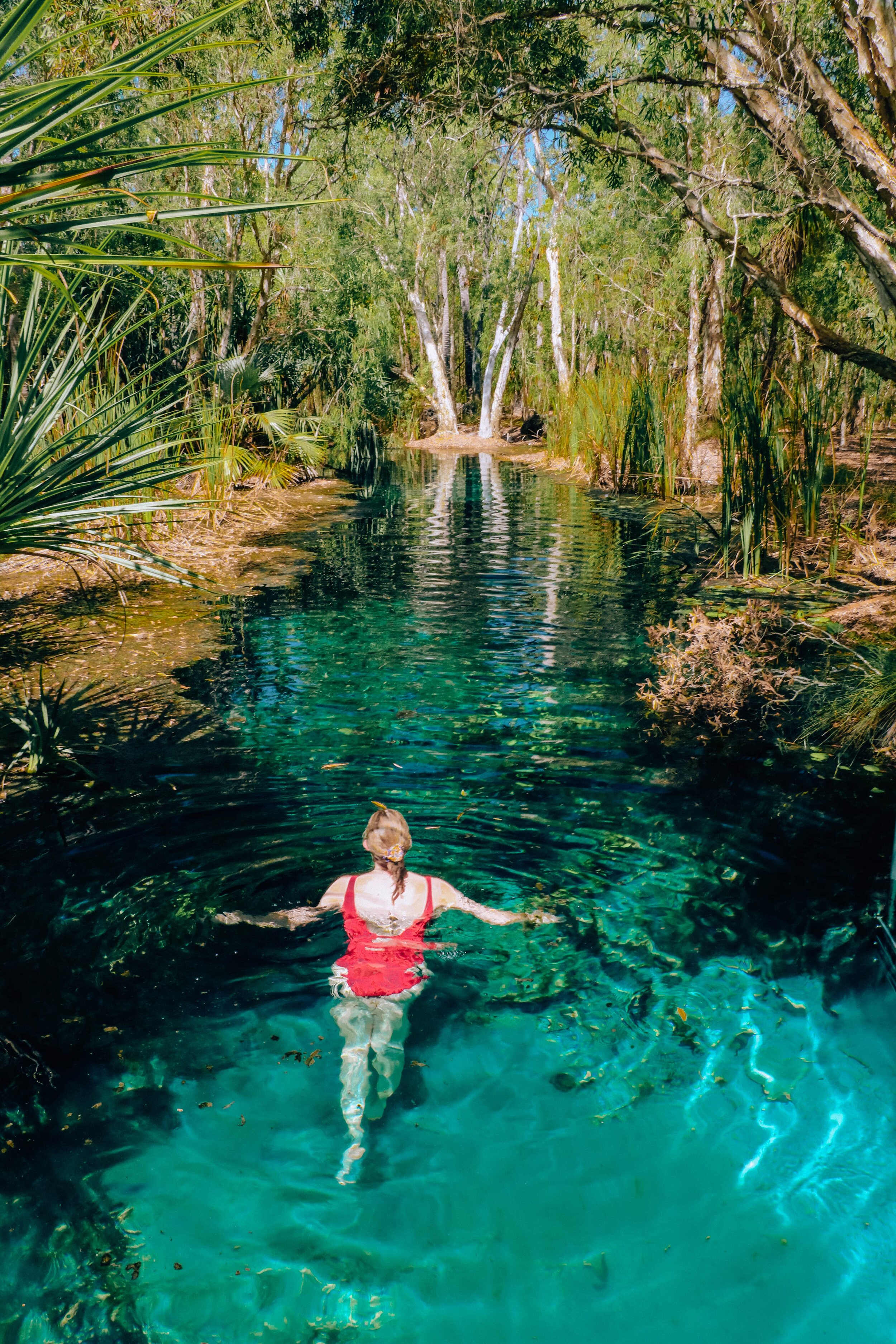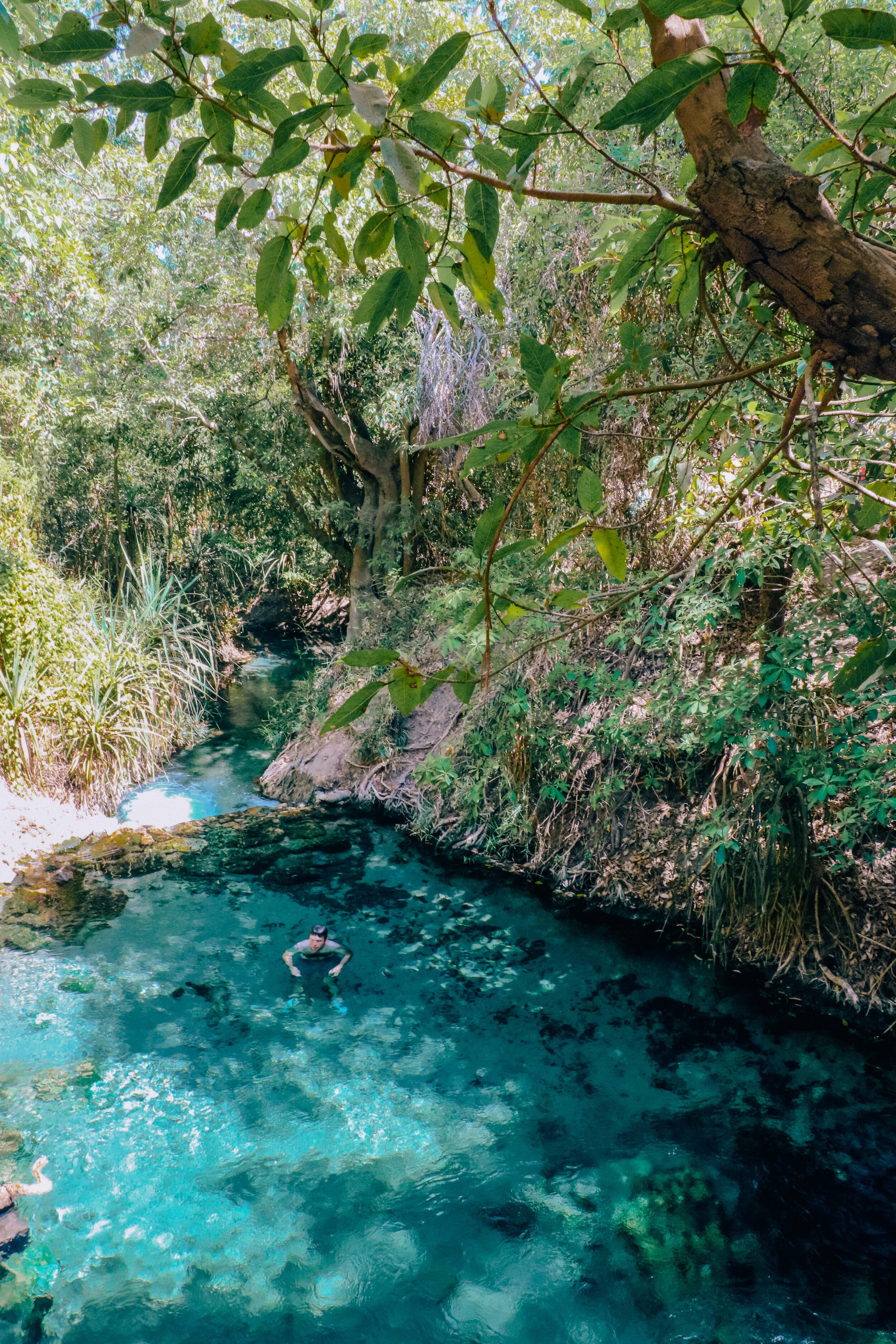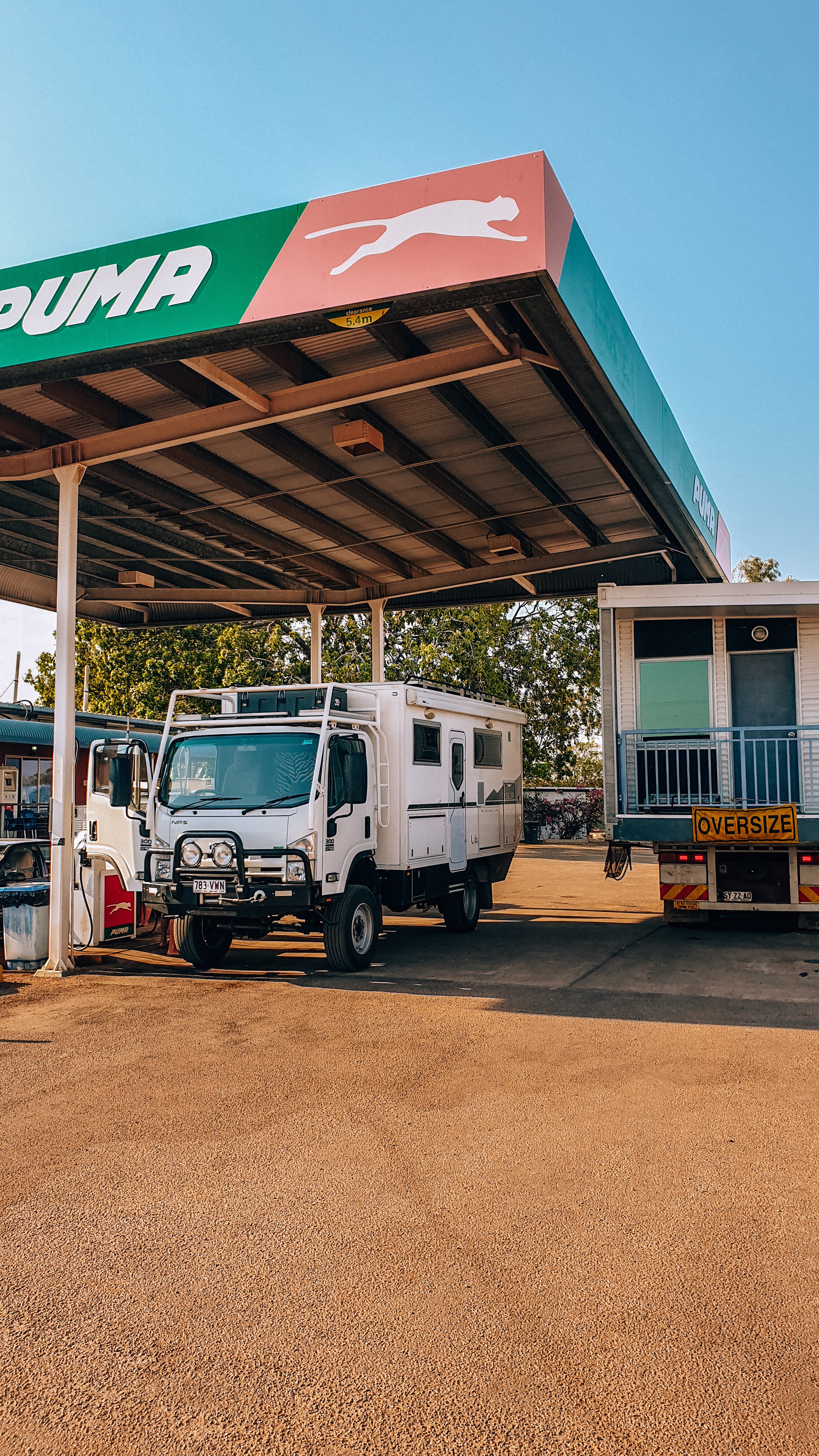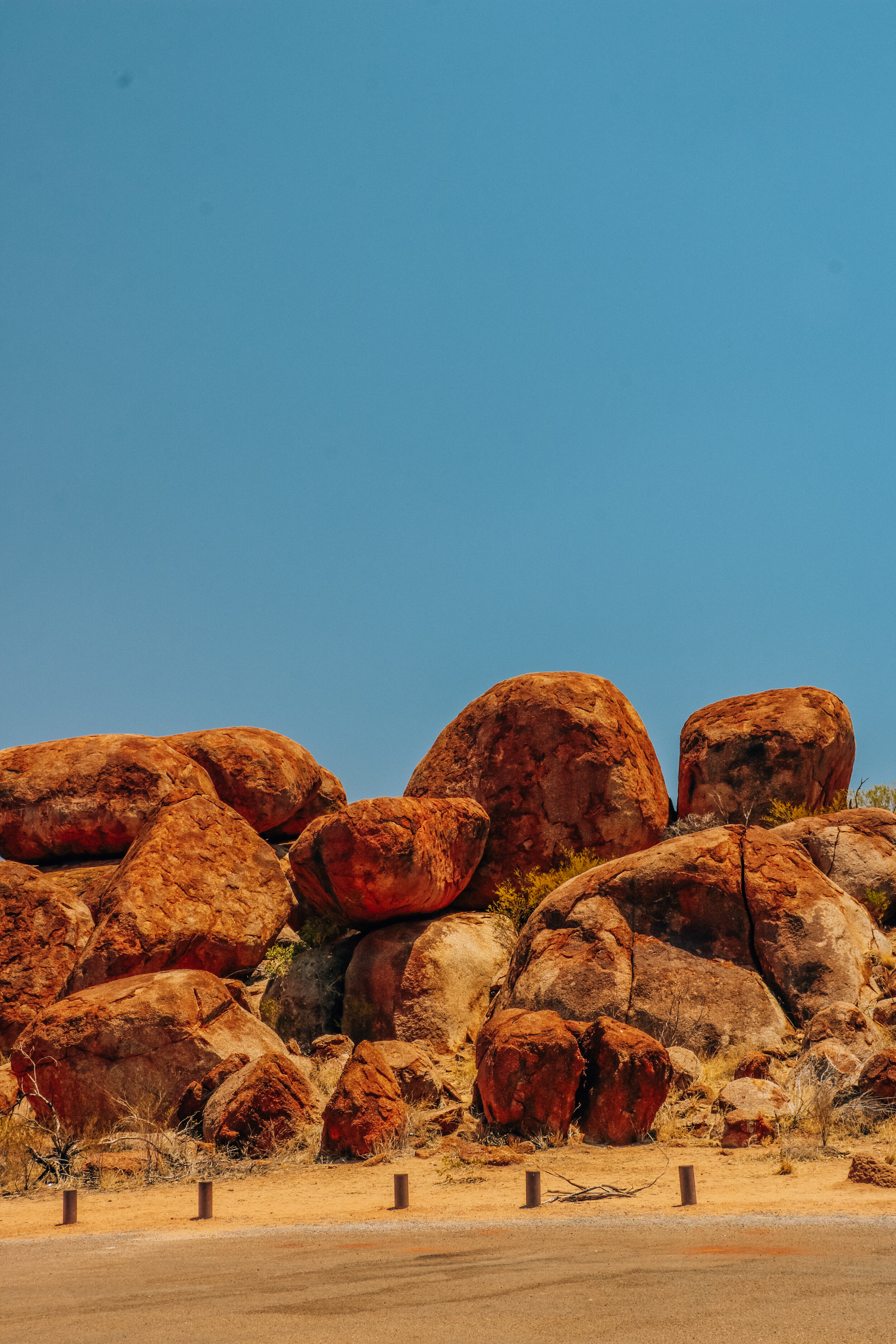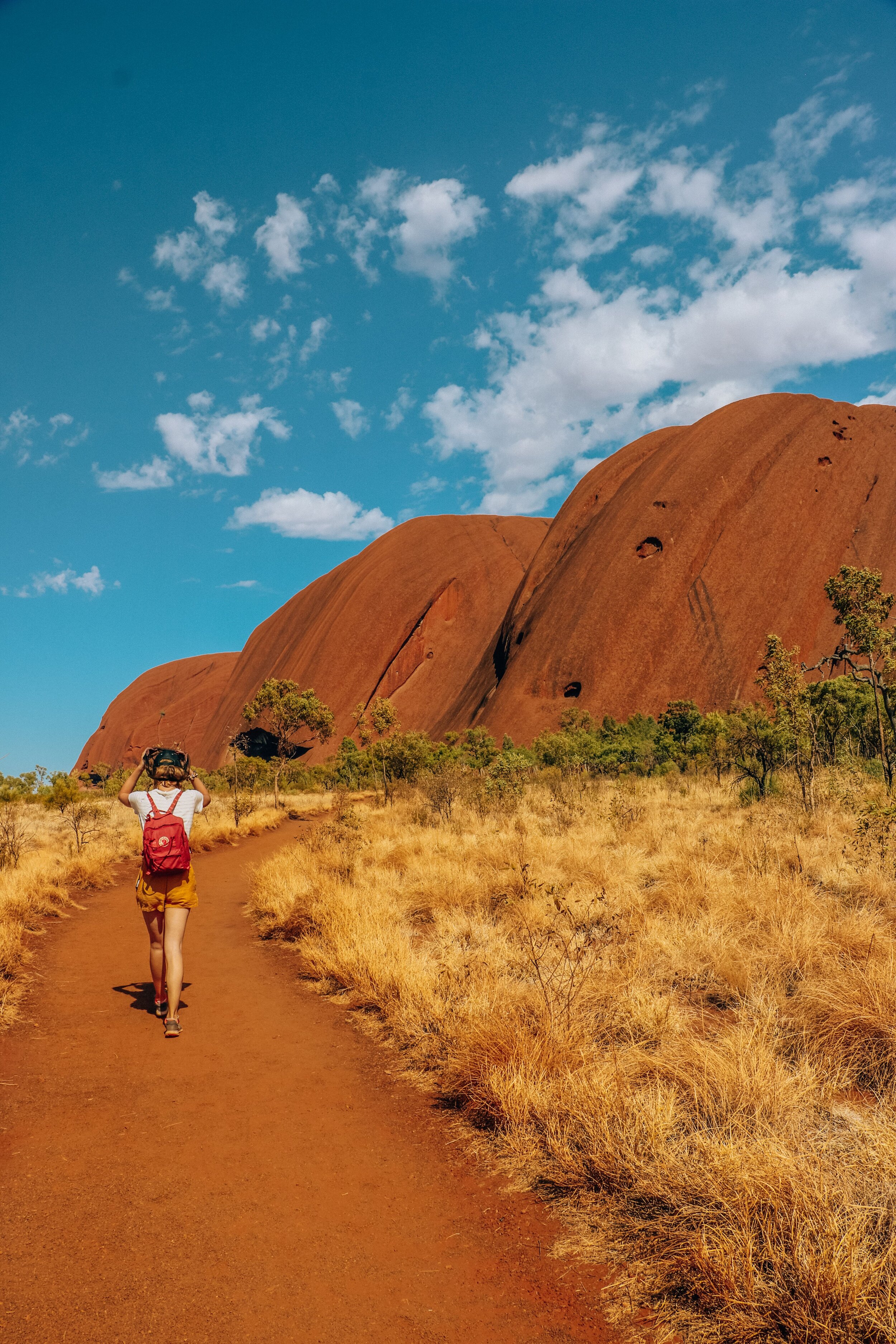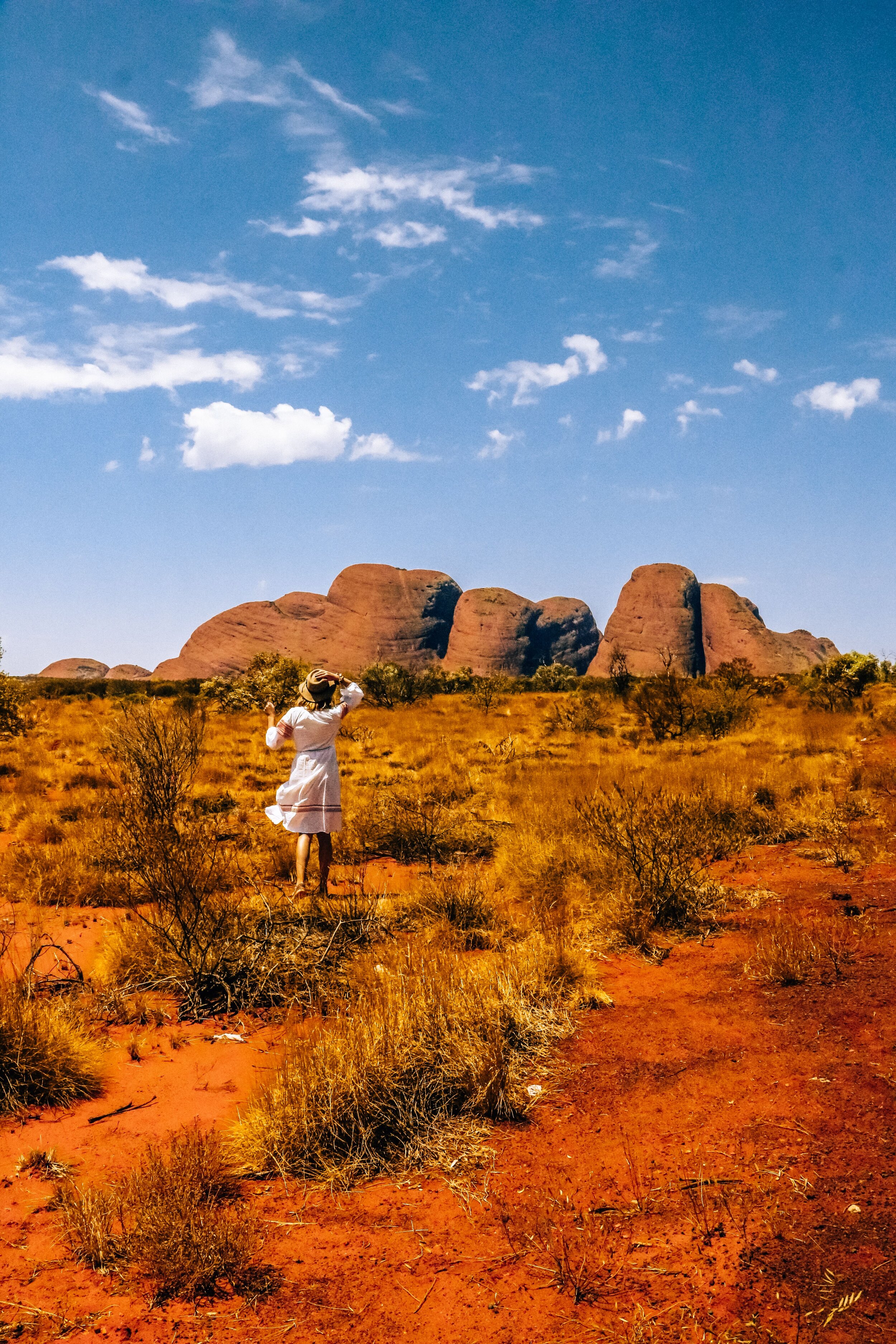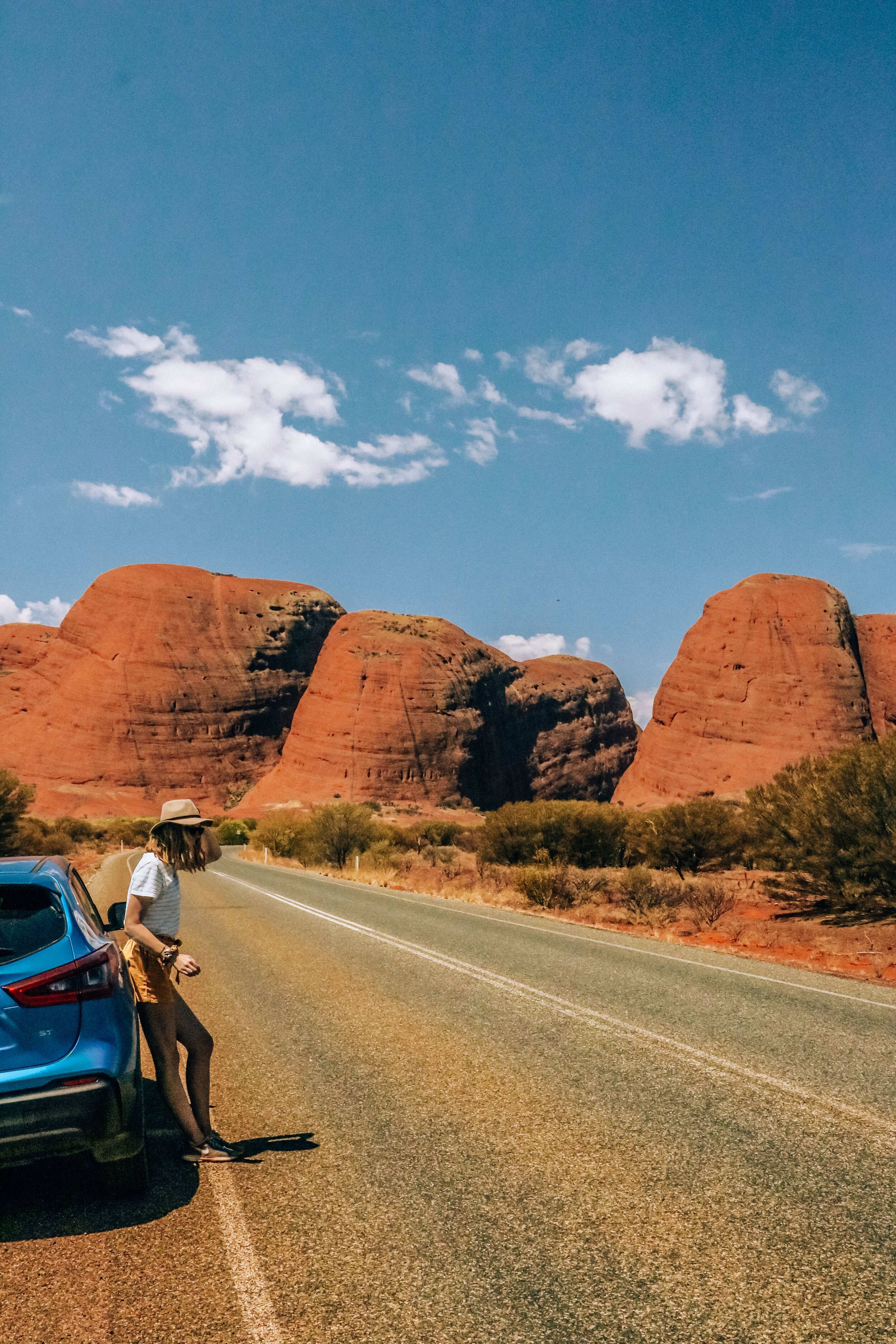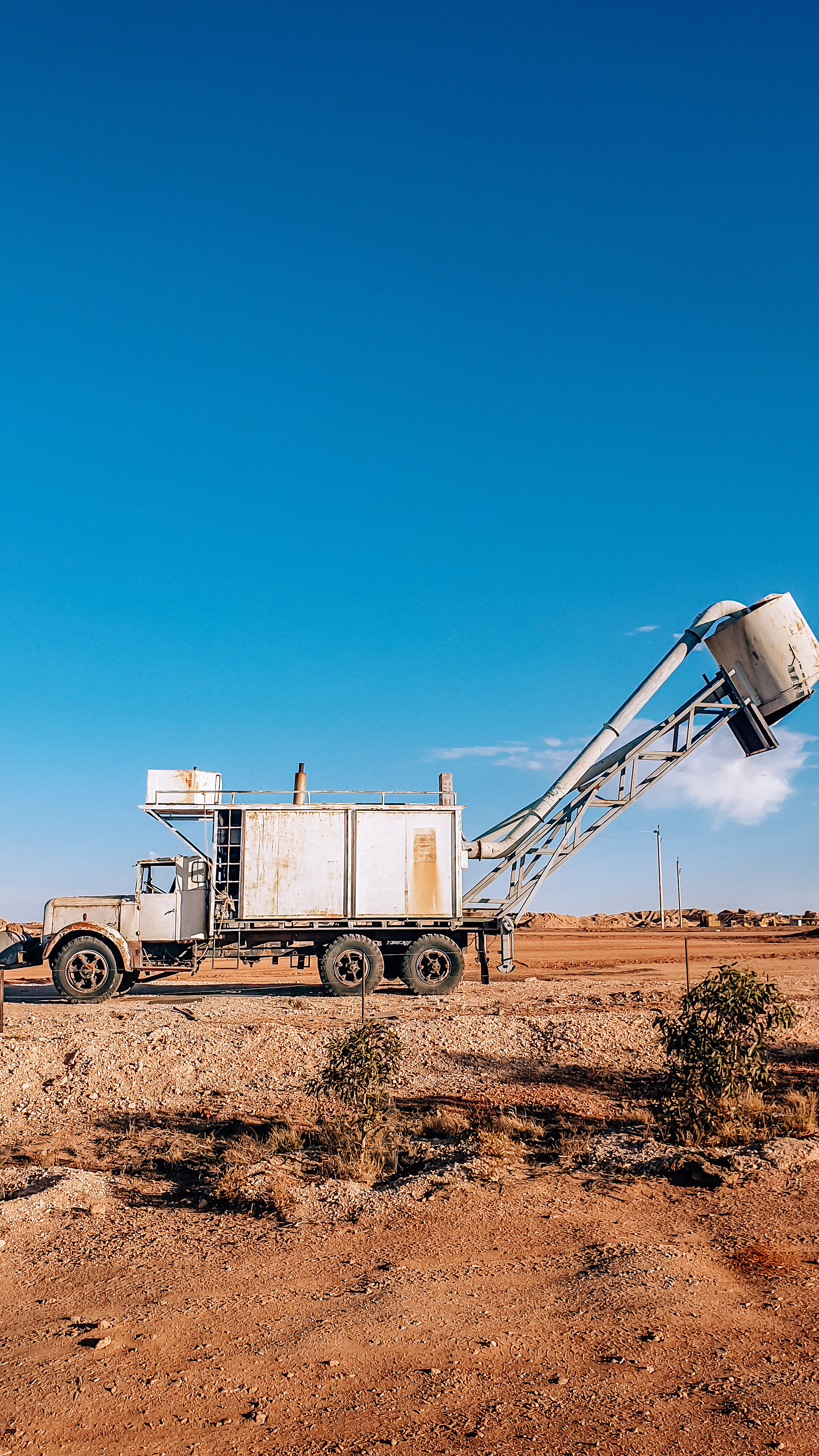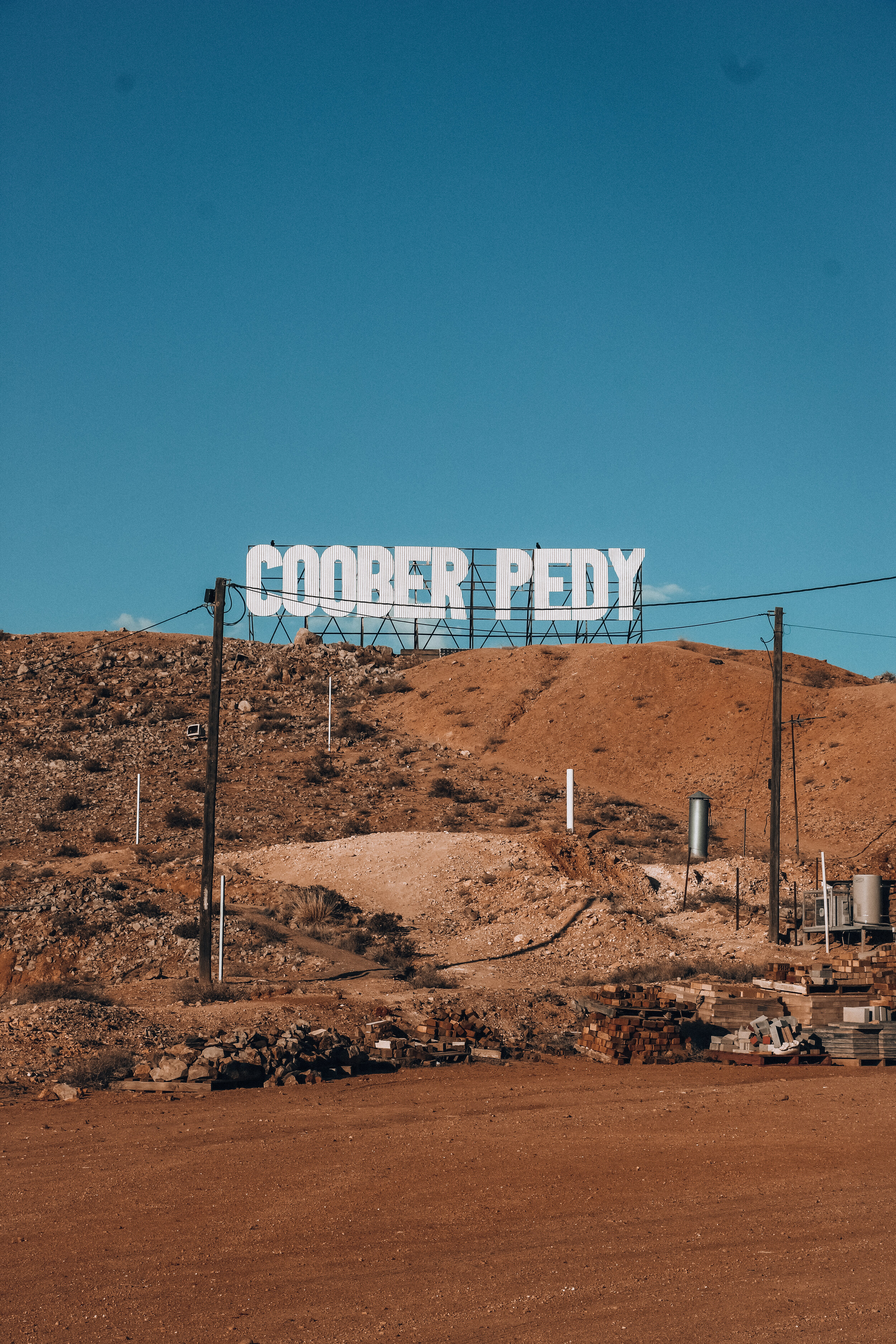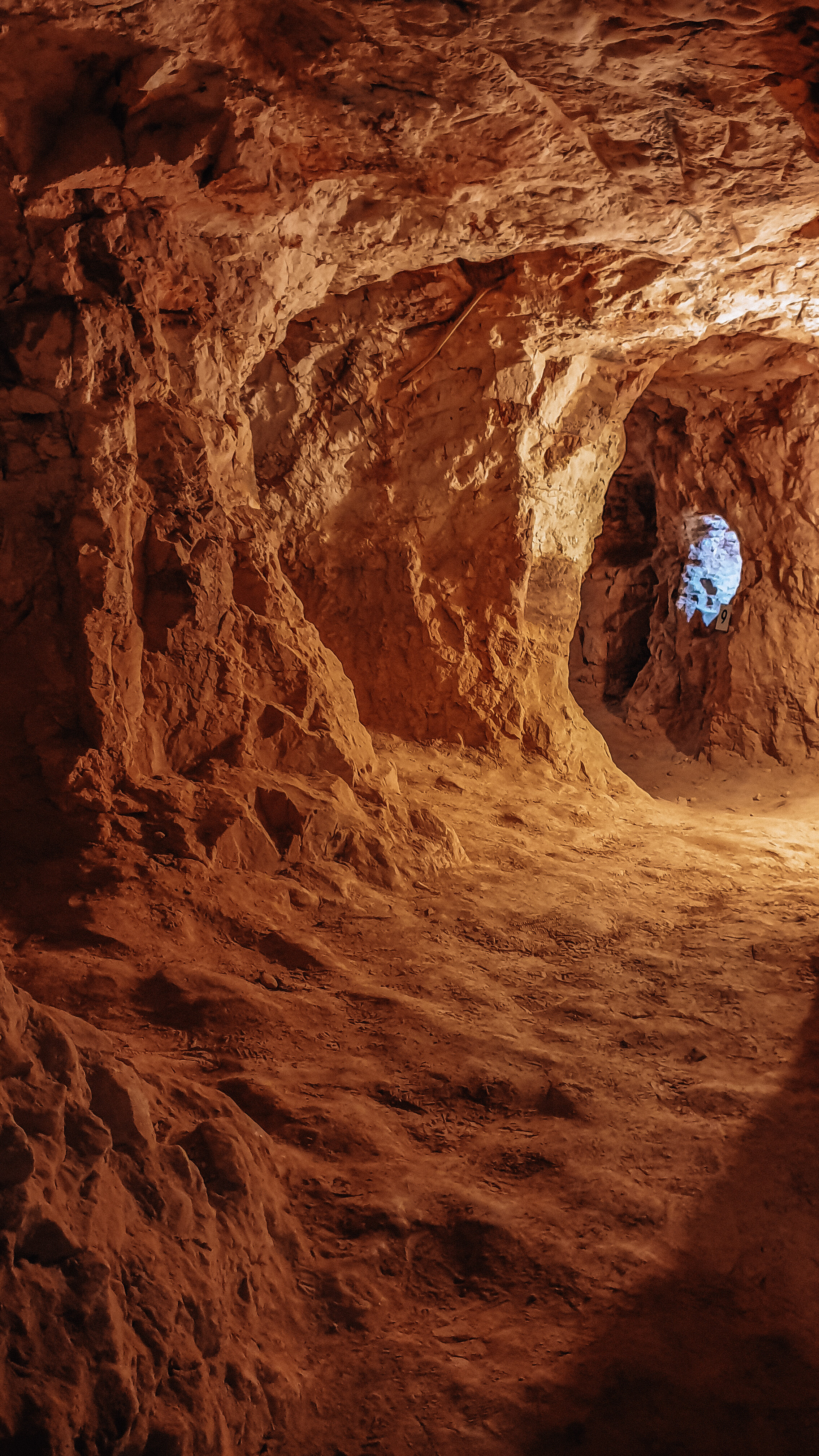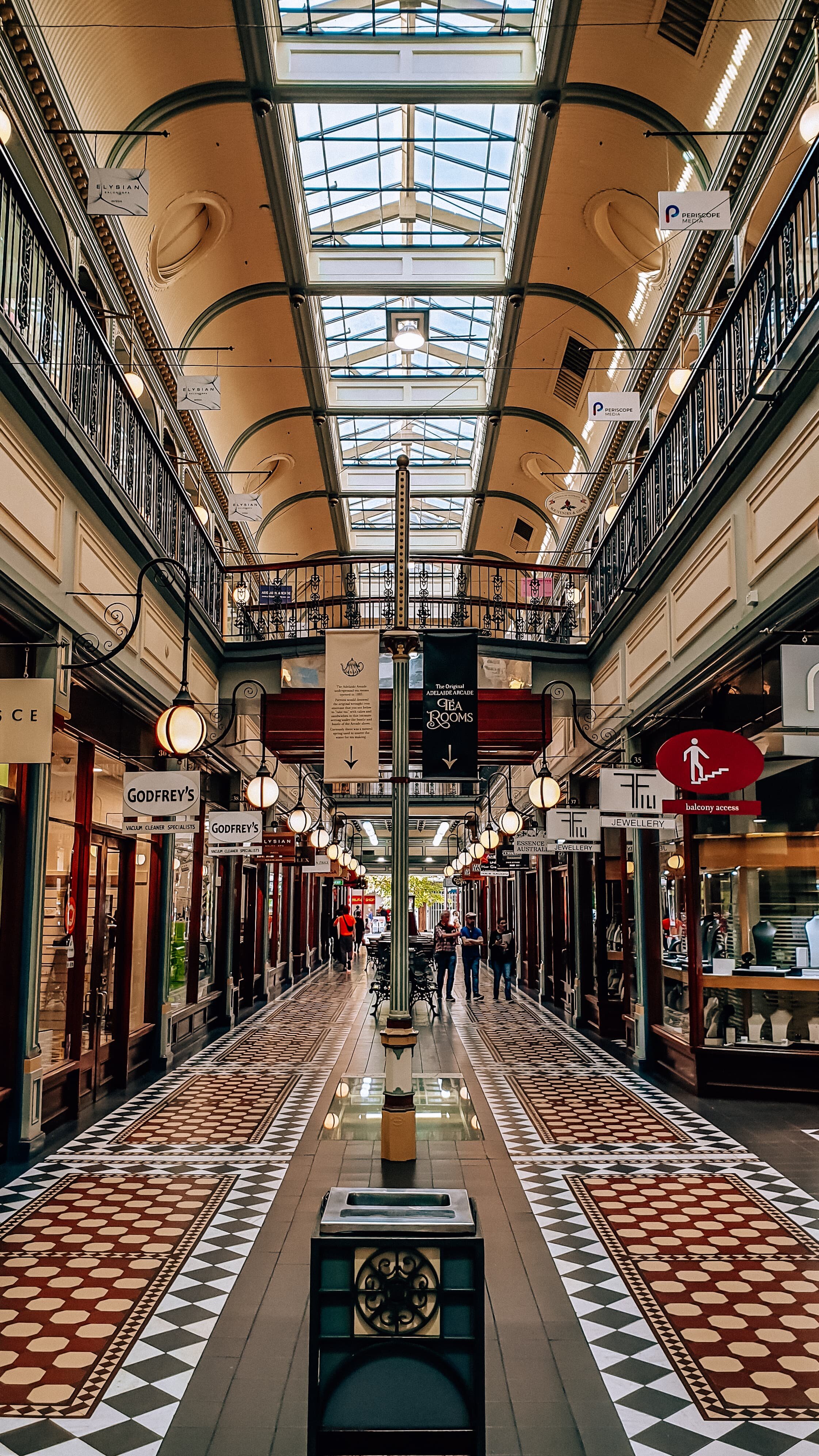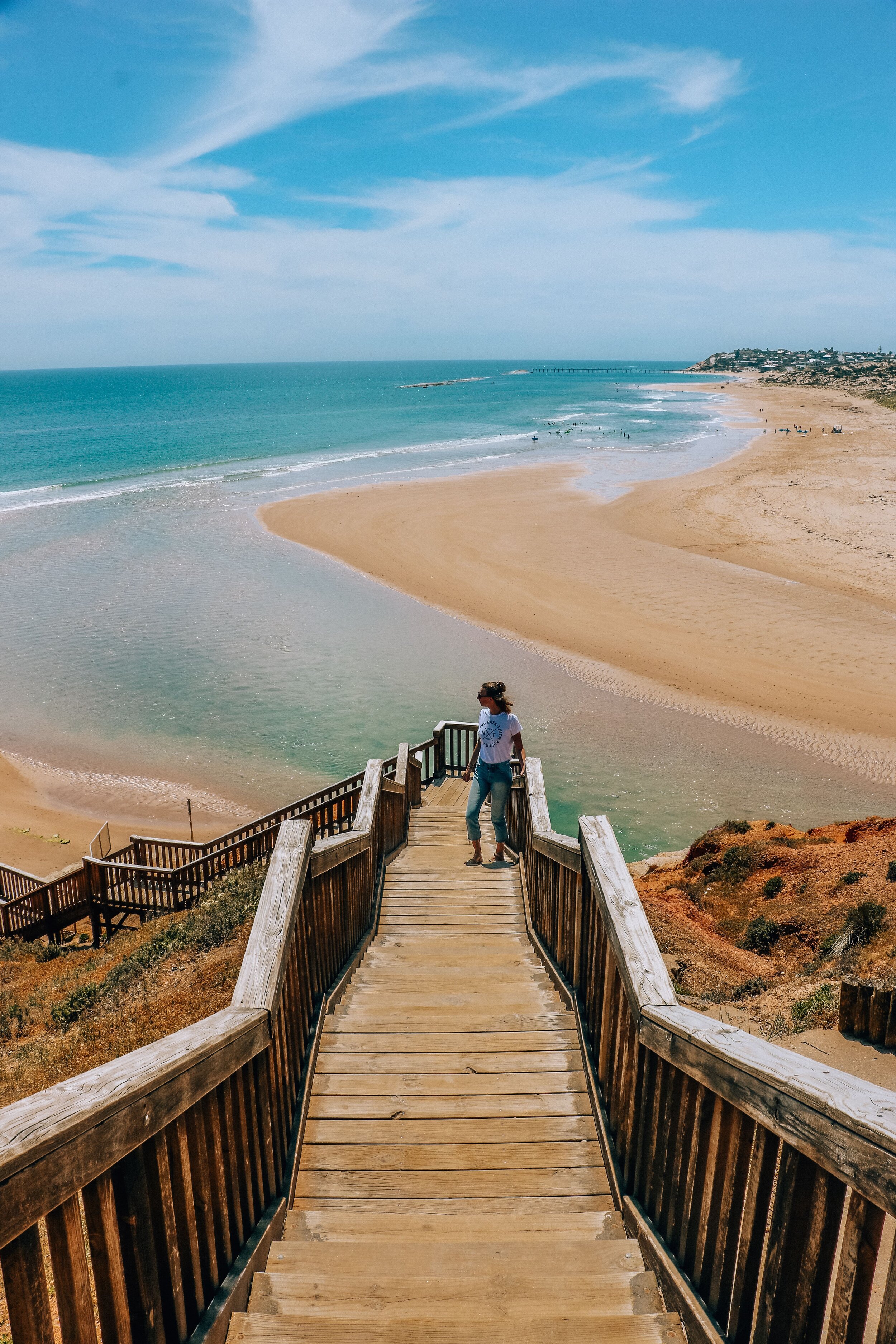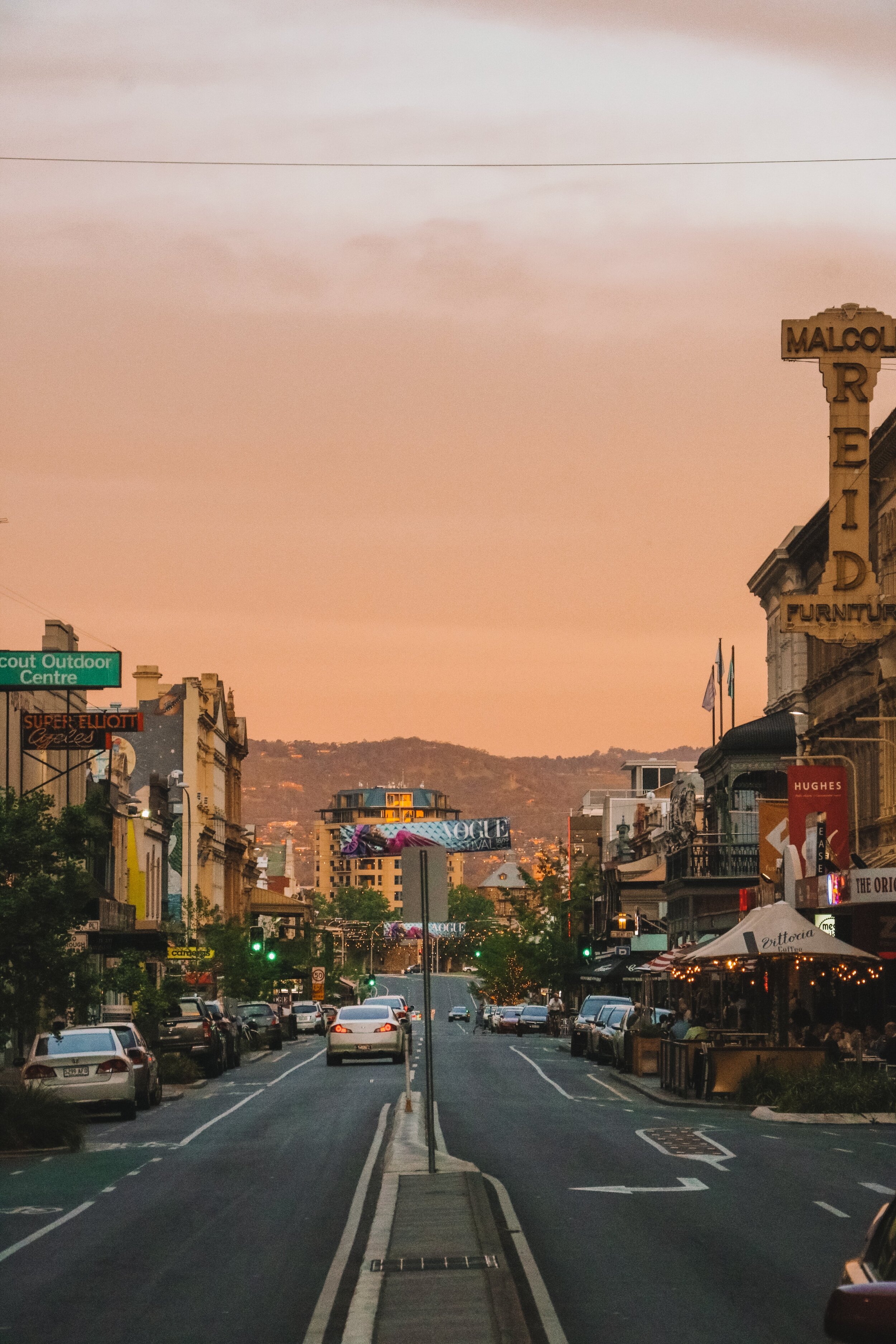Driving from Darwin to Adelaide, through Alice Springs and the Red Centre is the ultimate Australian outback road trip. The Darwin to Adelaide drive covers a distance of over 3,000km along the Stuart Highway, also known as the Highway A87. I did this road trip in October 2019 and I hope this 10-day Darwin to Adelaide itinerary, with vehicle hire info and accommodation recommendations, will help you plan a similar road trip to get the most from your Australian outback experience.
Note: this Darwin to Adelaide road trip guide can also be done in reverse as an Adelaide to Darwin road trip itinerary.
You might also be interested in my complete Australia Working Holiday Visa Guide.
Disclosure: This post may contain affiliate links, which means I may receive a commission if you click a link and purchase something. While clicking these links won't cost you anything, they will help me to keep this site up and running! Check out the full disclosure policy for more details. Thank you so much!
Facts about driving Darwin to Adelaide and the outback
Darwin to Adelaide distance = 3,030km / 1,883miles
Darwin to Alice Springs distance = 1,496km / 930miles
If you drove none stop from Darwin to Adelaide it would take you over 30 hours
Most of the route is driven on the Stuart Highway which links Darwin and Port Augusta. The Stuart Highway is named after John McDouall Stuart who took that route in 1862.
The Stuart Highway is a sealed road but locals still call it ‘The Track’
Parts of the Stuart Highway are used as an emergency landing strip and you will see signs labelling those sections as such. It’s used primarily for the Flying Doctors to make emergency landings.
The outback covers most of Australia except the coastal areas and is 22x the size of the UK
In Northern Territory there are less than 0.2 people per square km of land
Uluru is taller than the Eiffel Tower at 348m, the Eiffel Tower is only 324m
Kata-Tjuta (the Olgas) are 546m tall, which is the same height as New York’s One World Trade Centre
Uluru closed for climbing on 26th October 2019
In a 2006 census, the outback had a population of less than 700,000 residents
There are over 150 indigenous languages spoken in the outback
🚗 I use DiscoverCars for hiring a car abroad. They compare lots of different providers to find you the best price.
What is the best way to get from Darwin to Adelaide?
Hiring a vehicle
Whilst there are Adelaide to Darwin tours available, and the expensive but incredible option to take the Ghan train route, to get the most from your Darwin to Adelaide/Adelaide to Darwin road trip I would really recommend hiring a vehicle.
Tours and the train route have very limiting time constraints and set stops. The beauty of hiring a car is that you can stop as and when you want, you can go off the main road to check out a waterfall or a beautiful view point and spend as long as you want exploring each stop - something I really appreciated to have the time to explore the beauty of Uluru or the quirky town of Coober Pedy.
We hired a vehicle from Darwin airport and paid a one way fee so we could drop it off once we reached Adelaide. We hired with Firefly, a subsidiary of Hertz car hire. We paid $387 AUD at pick up and added on the insurance and damage protection plan for an additional fee.
I completely recommend you buy the full cover insurance for driving through the outback. Driving through the outback can be dangerous and it is remote, even on the main highway it can be a few hours before you see another person or vehicle if you break down. There are also additional hazards like kangaroos which can completely write off a car - I recommend not driving at dusk or dawn in the outback to avoid hitting one.
We got a flat tire which fortunately didn’t happen until we reached Adelaide but it meant we didn’t have to pay anything extra for that. Without the insurance cover we would have had to pay for a new tire.
How long does it take to drive from Darwin to Adelaide?
This really depends on how long you have and what you want to see on your route. On a straight run it will take you approximately 30 hours, although the highway is single lane for most of the way so if you get stuck behind a road train or slow vehicle, it will take longer!
We did the drive in 10 days. While this was enough to see the main sights, we could have spent longer to do some hikes in Kakadu National Park or go off road to some water holes or viewpoints. Unfortunately, unless you specifically hire a 4x4 with off-roading in the contract, you cannot take a rental vehicle off road. During our journey, there was also a big heatwave in Australia with temperatures in the Outback hitting 50 degrees celsius (122F) so these were simply not safe temperatures to go hiking in.
I would recommend doing this journey in the winter or spring/autumn, not in the summer! And if we went back, I would give myself 2 weeks to complete the route.
Tips for driving on the Stuart Highway
The Darwin to Adelaide drive is long and the distances you are covering are huge, it’s important not to get complacent even though you will be going long stretches without seeing another vehicle.
The Stuart Highway speed limit is variable depending on which state/territory you’re in and your proximity to towns or inhabited areas. The Stuart Highway max speed limit in Northern Territory is 120km/h. The max speed limit in South Australia is 100km/h. The speed limit is usually 50km/h in towns and cities.
Look out for kangaroos, especially at dusk and dawn. I wouldn’t recommend driving at night unless very necessary. If a kangaroo does come out of the bush it’s important not to brake, the impact will be harder if you do. If you keep moving forward at the same speed, it’s more likely the roo will hit the side of your vehicle and cause less damage.
Be aware of road trains. They are huge vehicles like the transporter trucks in the US and UK but they will be towing 3, 4 or even 5 trailers instead of the usual 1. Sometimes they can be wide loads, so be aware of you road position, especially if you’re towing a camper or large vehicle too.
I was very worried about finding petrol stations but they are regular enough that you don’t need to worry. Every stopping point, town or roadhouse always had a petrol station attached. Just download Google Maps and keep an eye on your next town and your petrol level. If you’re in doubt, just fill up.
Cruise Control will be your best friend. But don’t get complacent. We saw police and speed traps even out in the tiniest towns in the middle of nowhere.
Keep your eyes open for the spectacular outback scenery and wildlife!
This post may contain affiliate links, which means I may receive a commission if you click a link and purchase something that I have recommended. While clicking these links won't cost you anything, they will help me to keep this site up and running! Thank you so much!
Where to stop on the Darwin to Adelaide Drive
This is the exact route we took with recommended things to see and do at each point. These will vary depending on the time of year you go (too hot to hike in the summer) or how long you have (Port August and Flinders Ranges can be missed if you don’t have long enough). Below is he brief itinerary, click or scroll down for more detailed information about each stop.
Start: Darwin at 9am
3hr drive to Katherine
Stop 1: Katherine/Kakadu - 1-2 nights - stay in the town or camp in the National Park
Things to do:
Kakadu National Park
Katherine Gorge
Katherine Hot Springs
Mataranka Hot Springs
3hr drive to Daly Waters
Stop 2: Daly Waters - 1 night - overnight stop at roadhouse
Depart early for 9hr drive to Alice Springs
Explore Devil’s Marbles on the way for a lunch break stop
Stop 3: Alice Springs - 1 night - stay overnight optional sights to see
Things to do:
Botanical Gardens
Anzac Hill
Visitors Centre
5 hour drive to Uluru/Ayers Rock Resort
Stop 4: Uluru-Kata Tjuta National Park/ Ayers Rock Resort - spend at least 2-3 nights
Things to do:
Uluru base walk
Sunset drives
Kata Tjuta walks
Camel Tours
Balloon Rides
Field of Light art installation
Kings Canyon
Art museums and indigenous information centres
8 hour drive to Coober Pedy
Stop 5: Coober Pedy - 1-2 nights
Old Timer’s Mine and Museum
Umoona Opal Mine and Museum
Underground homes and hotels
The Breakaways
Catacomb Church
Drive 6 hours to Port Augusta
Stop 6: Port Augusta
Flinders Ranges hiking
End of Stuart Highway
South Coast
Drive 3 hours to Adelaide
End: Adelaide - stay as long as you want!
South Australian Museum
State Library of South Australia
Botanic Gardens
Adelaide Zoo
Southport Beach
Handorf
Adelaide Hills
Things to do on the Darwin to Adelaide drive
To accompany the itinerary above, the information below goes into more detail about the things to do on the Darwin to Adelaide drive, where to stay and tips for each location.
We aimed to alternate between long and short drives to keep the driving lengths of time manageable and so we didn’t have two days of 8 hour drives in a row.
Stop 1: Katherine/Kakadu - 1-2 nights - stay in the town or camp in the National Park
Kakadu National Park
Katherine Gorge
Katherine Hot Springs
Mataranka Hot Springs
The first section of the drive is only 3 hours direct from Darwin to Katherine. This is ideal for those who want to take a detour drive through Kakadu National Park and explore the trials, waterfalls and camping options. If you are travelling during the autumn, winter or spring I would recommend allowing 2 nights in the Kakadu/Katherine area so you can take advantage of the hiking trails.
Where to stay in Katherine:
Hotel - IBIS Styles Katherine
Budget Hotel (where we stayed) - Pine Tree Motel: good price, secure hotel, free parking, breakfast included
Hostel - Palm Court Backpackers
Camping in Kakadu National Park - click here for the full list of accommodation options in the park
We only spent one night in Katherine during the summer because it was too hot to go out on the trails in the National Park. But it still gave us the afternoon after our drive to Katherine and the whole of the next day to drive up to Katherine Gorge and visit the Katherine Hot Springs and Mataranka Hot Springs.
The Hot Springs:
Go to Katherine Hot Springs before 10am to have them mostly to yourself. The lower springs are family friendly with steps and slope access. The upper springs have steeper steps down to them and the water is flowing so there is more of a current which may not be suitable for young children or weak swimmers.
Mataranka Hot Springs are an hour outside of Katherine and make a nice stop on your way to Daly Waters. They are a short drive off the main highway but the road is completely sealed. The pools do smell of sulphur but they are completely safe to swim in. There is also a campsite within walking distance of these springs so you could choose to stay here if you are taking a camping trip.
The next stop at Daly Waters is only 3 hours away so you can spend the whole day in the Katherine and Kakadu Area before heading out to Daly Waters.
Stop 2: Daly Waters - 1 night - overnight stop at roadhouse
Driving through the outback is part of the fun and the experience, as well as all the stops along the way. And while Daly Waters doesn’t have anything to see or do, it does give you the opportunity to experience an Outback Roadhouse and the traditional historic pub there.
We stayed at the Daly Waters Hi-Way Inn right off the highway - you can book here through their website.
There are cabins, motel rooms and camping options available. As with most rest stops on the highway, there is also a petrol station. There is also a bar and food store onsite. The staff are super friendly and it’s a great to ease into the journey with the first long leg of the drive coming up the next day!
On the way to Alice Springs, be sure to stop or at least drive through the Devil’s Marbles. There are rock formations sacred to the indigenous people and are protected.
There is a car park, picnic area and plenty of information about how the rocks were formed over thousands of years.
TIP: if you’re travelling in the warmer months, make sure to purchase a fly net to wear over your head. The flies were almost unbearable!
Stop 3: Alice Springs - 1 night - stay overnight optional sights to see
After the 9 hour drive from Daly Waters, it probably means you won’t arrive here until the later afternoon - remember to leave Daly Waters early to avoid driving at dusk when the Kangaroos come out.
Alice Springs is the biggest town you will come across on the trip so it’s a great time to re-stock on supplies, food, ice or gear if you’re camping. Or if you plan to camp at Uluru then I suggest getting all your supplies here as buying at the Uluru resort is extremely expensive because it’s a captive market.
Also there is no where else to stop between here and Uluru so be sure to re-fuel your vehicle in Alice Springs. There is a petrol station at the Uluru resort but it is very expensive so only refuel there when you leave.
We only stayed overnight in Alice Springs then left early the next day to head to Uluru so we could see the rocks at sunset. But if you do decide to stay in Alice Springs longer, check out the visitors centre information, Anzac Hill and the Botanical Gardens. There are also tours, hiking, balloon rides and cycle routes in the area.
Where to stay in Alice Springs
Hotel - DoubleTree by Hilton Alice Springs
Budget Hotel - Crowne Plaza Alice Springs
Hostel (where we stayed) - Jump Inn Alice Springs Budget Accommodation
Camping - Heritage Caravan Park
Stop 4: Uluru-Kata Tjuta National Park/ Ayers Rock Resort - spend at least 2-3 nights
The drive from Alice Springs to Uluru is about 5 hours. Make sure to re-fuel and get any supplies you need from Alice Springs as things are extremely expensive in Uluru Resort.
Uluru Resort is basically the entire town in Uluru Kata-Tjuta National Park. It encompasses most of the hotels, campgrounds and caravan parks, as well as all the shops, convenience stores, post office, cafes and petrol station. So it’s likely that you will be staying here as your base as it is not legal to camp anywhere else within the park.
We left Alice Springs early so we arrived in Uluru Kata-Tjuta National Park just after lunch. This gave us plenty of time to register at the resort and set up our campsite. Accommodation is very expensive here, especially if you’re booking last minute, so be sure to book as far in advance as you can.
The entrance to the National Park is just down the road from the resort entrance. You will need to pay for a park pass to enter - this pays to preserve and maintain the park. You can buy it in advance online or when you arrive at the gate. I recommend buying online in advance from here and then download the tickets to your phone. Then you can scan the ticket at the gate as you drive through.
Currently the park pass costs $25.00AUD for 3 days and this can be extended to 5 days at no extra cost. But as of 1st November 2020 this will be going up to $38.00 for 3 days. However if you are travelling with children, the current fee for a child is $12.50, but from 1st November 2020 child entry will be free.
I recommend staying for at least 2 nights and 3 days in Uluru. If you want to do some of the longer walks or more of the activities in the area then I would suggest staying for 3-4 nights.
If you’re short on time, check out my article: Visiting Uluru: a 2 day itinerary.
With 3 days and 2 nights we did:
Uluru base walk
Sunset drives x 2
Sunrise drive x 1
Kata Tjuta walks
Other things you can also do include:
Camel Tours
Balloon Rides
Field of Light art installation
Kings Canyon
Art museums and indigenous information centres
After arriving at the resort at lunch time and setting up camp, we checked out the museum and visitors centre where we learnt information about the park and indigenous history.
Both evenings we went for a sunset drive to the sunset viewing area (labelled on Google Maps and with road signage). Make sure to go to the public cars viewing area and not the coach viewing area. I recommend you arrive 40-45 minutes before sunset, not only because the car park gets extremely busy and spaces fill up fast, but also part of the sunset experience at Uluru is seeing the rock change colour. It really is magical!
TIP: Take a picnic and some drinks, back your car into a spot facing the Uluru and sit in the trunk with your picnic and camera ready. The outback gets cold fast in the evening - take warmer clothes and blankets too.
There is also a sunrise viewing area on the opposite side of Uluru, which is a great way to start the day!
Uluru Base Walk
Uluru is no longer open for climbing because it is hugely disrespectful to the indigenous tribes and ownership has been returned to them as a sacred place. But you can walk the track around the base. This takes approximately 3 hours so I recommend starting early in the morning and finishing before the midday heat.
Kata-Tjuta (The Olgas)
Kata-Tjuta is actually a bigger rock formation than Uluru and a short 30 minute drive from the resort. There are 2 main walks you can take through the rocks, most are now closed for preservation purposes: Walpa Gorge Walk and Valley of the Winds Walk are the only ones still open.
TIP: Do these walks later in the day when everyone is heading back to the sunset viewing area. The tracks are a lot quieter.
The roads are all sealed in the surrounding area so make sure to drive all the way around and soak in the views.
Where to eat at Uluru Resort
You can eat in the hotel restaurants on the resort even if you aren’t staying in them. We did that one night and then had a picnic the other night. The food is expensive so it’s definitely worth planning any food you bring with you from Alice Springs.
Where to stay
Luxury - Sails in the Desert
Hotel - Lost Camel Hotel
Budget Accommodation - Ayers Rock Resort Campground Cabins from $178
Camping - pitches from $43 (what we did)
If you have an extra day in the area, go to Kings Canyon and complete the rim walk there. It is a breathtaking area of the outback and about a 3 hour drive from Uluru-Kata Tjuta.
Stop 5: Coober Pedy - 1-2 nights
Start early from Uluru as it will be a long 8 hour drive to Coober Pedy in South Australia.
Coober Pedy is known for its opal mining industry and quirky, underground lifestyle. So if you’re visiting, be sure to book your accommodation in an underground hotel or hostel, it’s such a weird but unique experience.
We arrived in the evening right before sunset and our incredible B&B host took us to the surface above our hotel with some beers to watch the sunset over the ranges.
We only stayed in Coober Pedy one night but we wished we could have stayed for two.
Where to stay underground in Coober Pedy
I cannot recommend the B&B I stayed in enough: Jam B&B. It was underground in a self-contained addition to the host’s house under the ground. It had a shared living, kitchen and bathroom area with the other room being rented but a private double bedroom. Everything was so quirky and quaint and breakfast was included too.
Accommodation is limited in Coober Pedy but it’s unique, it’s even been featured on the Instant Hotel Netflix show. You can even camp underground!
Luxury hotel - Comfort Inn Coober Pedy
Mid-range hotel (where we stayed) - Jam B&B
Hostel - Radeka Downunder Underground Backpackers & Motel
Camping - Riba’s Underground Camping
Things to do in Coober Pedy
Old Timer’s Mine and Museum
Umoona Opal Mine and Museum
Underground homes and hotels
The Breakaways
Catacomb Church
Old Timer’s Mine and Museum
This is a self-guided audio tour which costs $12.50 and takes you through the history of opal mining in the area and the settlement of people in the area and underground living.
The Breakaways
The Breakaways are an incredible Mars-like landscape which has been used in filming locations. The Breakaways are actually north of Coober Pedy back up the Stuart Highway so if you arrive early enough you might want to drive out. But the road is unsealed (but very driveable) so you need to take it slow, I wouldn’t recommend driving back down it in the dark.
If you go during the day and continue east from the Breakaways you can loop back around to Coober Pedy and also see the dog-fence: the longest fence in the world which stretches across 3 Australian States to keep the dingos out.
Stop 6: Port Augusta
This stop is optional as we stayed later in Coober Pedy and didn’t have time to drive the 9 hours to Adelaide from Coober Pedy.
Whilst there isn’t a lot to see and do in Port Augusta, it is the end of the Stuart Highway and it’s also a good base if you’re looking to head up to the Flinders Ranges.
The Flinders Ranges are the largest mountain range in South Australia and the landscape is surreal. There are plenty of great hiking routes to do, such as the famous Arkaba Walk - although you’ll need a few days to do this 45km trail! You can find out more information here.
This is also a great option for a 3 day, 2 night Flinders Ranges tour. You can add optional extras like scenic flights or eco tours.
Where to stay in Port Augusta
Hotel - Majestic Oasis Apartments
Mid range motel (where we stayed) - Poinsettia Motel
Camping - Discovery Holiday Parks
End: Adelaide - stay as long as you want!
From Port Augusta it’s just a 3 hour drive onwards to Adelaide. From Flinders Ranges it is a 5 hour drive back to Adelaide.
There is plenty to do in Adelaide and so many great places to go onto from the city too.
South Australian Museum
State Library of South Australia
Botanic Gardens
Adelaide Zoo
Southport Beach
Handorf
Adelaide Hills
Barossa Valley wineries
Where to stay in Adelaide
We stayed at the Marion Hotel which is a little out of the city so you will need to have your car for a few days here too. But the hotel is gorgeous, the rooms are beautiful and the food is great too.
Luxury Hotel - Mayfair Hotel
Mid range hotel - Marion Hotel
Budget Hotel - Adelaide Riviera Hotel
Hostel - Tequila Sunrise Hostel
I hope this Darwin to Adelaide road trip itinerary has been helpful and if you use any of the tips or recommendations, I’d love to hear about it!
Like it? Pin it!
Flights: I use Expedia to find great flights and the best deals all over the world, they have regular sales and offers so I always check their website. I also check CheapOair to find cheap deals on round trip flights.
Car Rental: I love the customer service I've always gotten and the variety of options with Rental Cars. But for short notice rentals, I've been using Expedia for the last year, they always seem to have great one-day rates or last-minute rates from the main rental companies.
Accommodation: I prefer the flexibility of booking accommodation with Booking.com so I can cancel or change my reservation without a fee or only pay on arrival for most properties. For longer or more unique stays I prefer AirBnB because you can get the long stay discount, you can also find more unique properties and book experiences with talented locals and businesses. For my budget trips, I always stay in hostels and book through Hostelworld because they have great guarantees if anything does go wrong. If you arrive and your booking is not at the property, they refund the full deposit AND give you $50 extra credit.
Tours and organised trips Although I don’t use tours that often, I do like to book local experiences or day trips once I reach my destination. For that I use GetYourGuide because it has the biggest selection and variety of tour and experience options.
Travel Insurance: I currently use SafetyWing Nomad Insurance. Which allows me to pay a rolling monthly fee to cover my long term travels.
My camera gear and equipment: I use a Canon 77D with an 18-135mm lens or a 50mm lens. And a DJI Mavic Mini Drone. For all my gear including laptops, tripods and more camera accessories read my travel photography gear guide.
